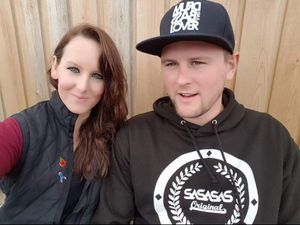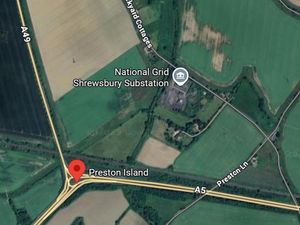Still ongoing: Fierce debate about GM foods that began with a tomato puree
For a new line of tomato puree, this was quite some launch.
If there was anything in the adage that 'all publicity is good publicity', then the marketing teams at Sainsbury's and Safeway must have thought all their Christmases had come at once back in 1996.
A quarter of a century since Britain's genetically modified food product went on sale in the UK, the debate about such foods still rages fiercely.
North Shropshire MP and former environment secretary Owen Paterson is calling for the liberalisation of the rules on GM foods now that Britain has left the European Union, but others are sceptical about the risks of opening the doors to the new technology too soon.
"We have missed a whole generation which have lost out on the benefits that are being enjoyed by competing agricultural economies," says Mr Paterson.
"We could have made agriculture more productive and used less pesticides, but instead we have missed out on the huge environmental benefits."
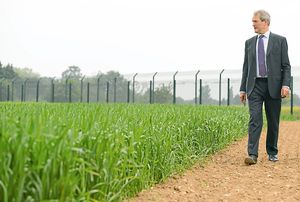
Certainly, the information sheets that accompanied the launch of the new tomato puree in Februar, 1996, by British bioscience giant Zeneca, certainly sounded impressive. Whereas normal tomatoes had to be picked while they were still green and artificially ripened by blasting them with gas, the new Flavr Savr toms were specially bred not to rot, meaning they could be left on the vine to ripen naturally. Not only did this mean a better flavour, it meant the product would last longer.
Zeneca's Nigel Poole said: "Everybody wins; the farmer has a longer window for delivery, there is less mould damage, the tomatoes are easier to transport and they are better for processing."
And on top of that, the process needed less energy and water, meaning the new puree was 18 per cent cheaper than the regular brands.
No wonder if flew off the shelves – for a while.
But confidence was dented by a report in 1999, which suggested that the internal organs and immune systems of rats had been altered after they had been fed GM potatoes. The research, it turned out, was flawed, but the damage was done, and consumers were growing increasingly suspicious of GM food. The tomato puree was withdrawn that year.
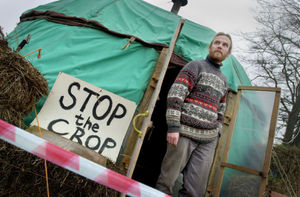
Outspoken critics include the Prince of Wales, who told an audience of scientists and conservationists, that the implications of some GM crops were "enough to send a cold chill down the spine".
Yet there have also been examples of genetic engineering which even he would find hard to argue with – such as the genetically modified tomato which has shown promising signs of being able to fight off cancer.
Mr Paterson warns that Europe will become a 'museum of world farming' if it doesn't embrace the new technology. He also says opponents are endangering the lives of children in Third World countries, by denying them the right to 'golden rice' with added nutrients which can prevent blindness.
Up until now, EU rules have effectively banned British farmers from growing genetically modified crops commercially, although there have been experimental trials of GM wheat and potatoes. But with Britain now out of the EU, Mr Paterson says it is time to break free.
"The longer Europe continues to close its doors to GM, the greater the risk that the rest of the world will bypass us altogether," he says.
"Europe risks becoming the museum of world farming as innovative companies make decisions to invest and develop new technologies in other markets."
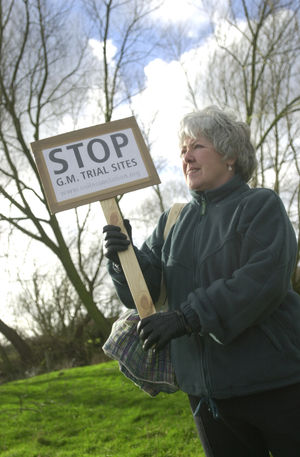
Ralph Early, a retired professor of the food industry at Harper Adams University, says the EU is right to be cautious. He says while genetic research may well have an important role in the future of medicine, he fears the impact that untested farming methods may have on the environment.
Mr Early, who vehemently opposed Brexit, fears that now Britain is out of the EU it will be tempted to undercut EU food standards in order to secure a trade deal with other countries.
"When we were in the EU there were 28 different countries putting their heads together, but now we are no longer in, we are a country on our own desperate for business," he says. "I don't trust our politicians to do the right thing."
Mr Early fears that Britain will be pulled away from the EU's precautionary approach, where nothing is permitted until it has passed rigorous tests, to the United States's more laissez faire approach.
He says he is not so worried about GM foods being imported from other countries, providing they are clearly labelled and people know what they are buying. His real concern is the impact that new farming methods could have on ecosystems in the UK.
Mr Early cites the case of hormone injections developed by American biotech giant Monsanto to improve the milk productivity of cows. Studies showed that the hormones caused skeletal problems in cattle, and were banned in the EU. More worryingly, though, are the – disputed – claims of a link between milk produced in this way and cancer.
"Three times Monsanto has tried to get the EU to lift that ban, and three times it has failed," says Mr Early.
"I don't want to drink milk that has been produced in that way, but it is quite possible that Britain might now allow it, and it might not even need to be labelled as such."
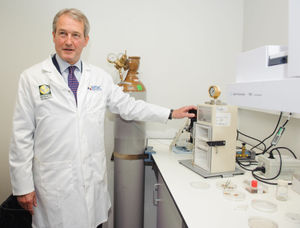
Another concern is that if GM crops are grown within the vicinity of organic crops, that GM seeds will be carried with the wind and contaminate organic farms.
"Rapeseed pollen will travel 30-40 miles," says Mr Early.
"I suspect that is the real reason that the American companies are desperate to get into the UK, it's not that we are a massive market. But if you put GM seeds in, say, Kent, with the wind travelling in the right direction, farms in northern France will be contaminated.
"That would effectively put an end to the EU's arguments against GM crops, because it would be too late."
Mr Paterson says many of the concerns about GM foods are groundless.
"There is a lot of scaremongering around," he says.
"GM foods have been around for a very long time now, and there has not been one proven case of any harm being caused anywhere in the world, ever."
He points out that most farm animals have been fed with GM food for some years.
"I doubt if you can buy a piece of meat in any butcher's which does not come from an animal which has been fed on GM feed," he adds.



